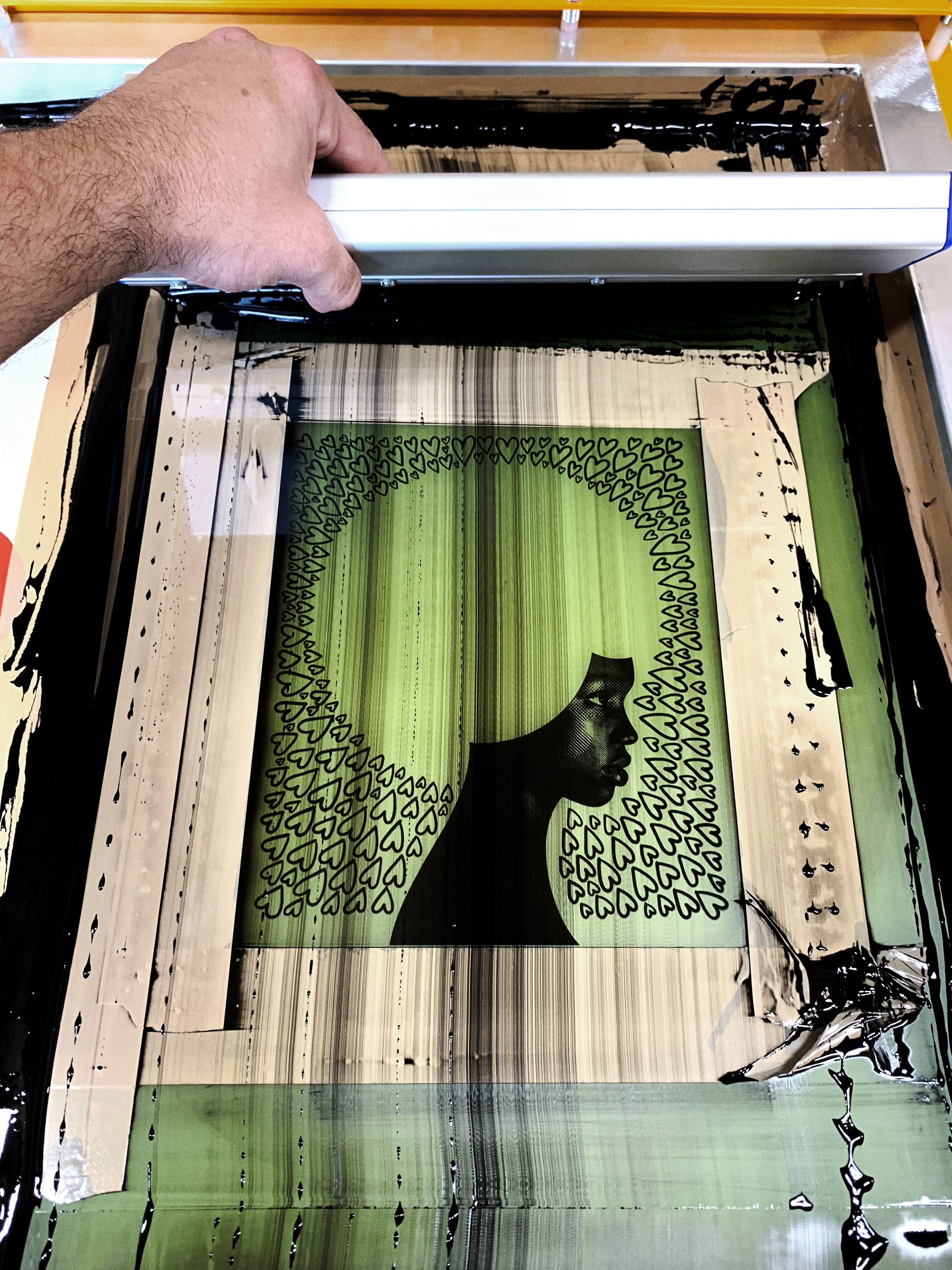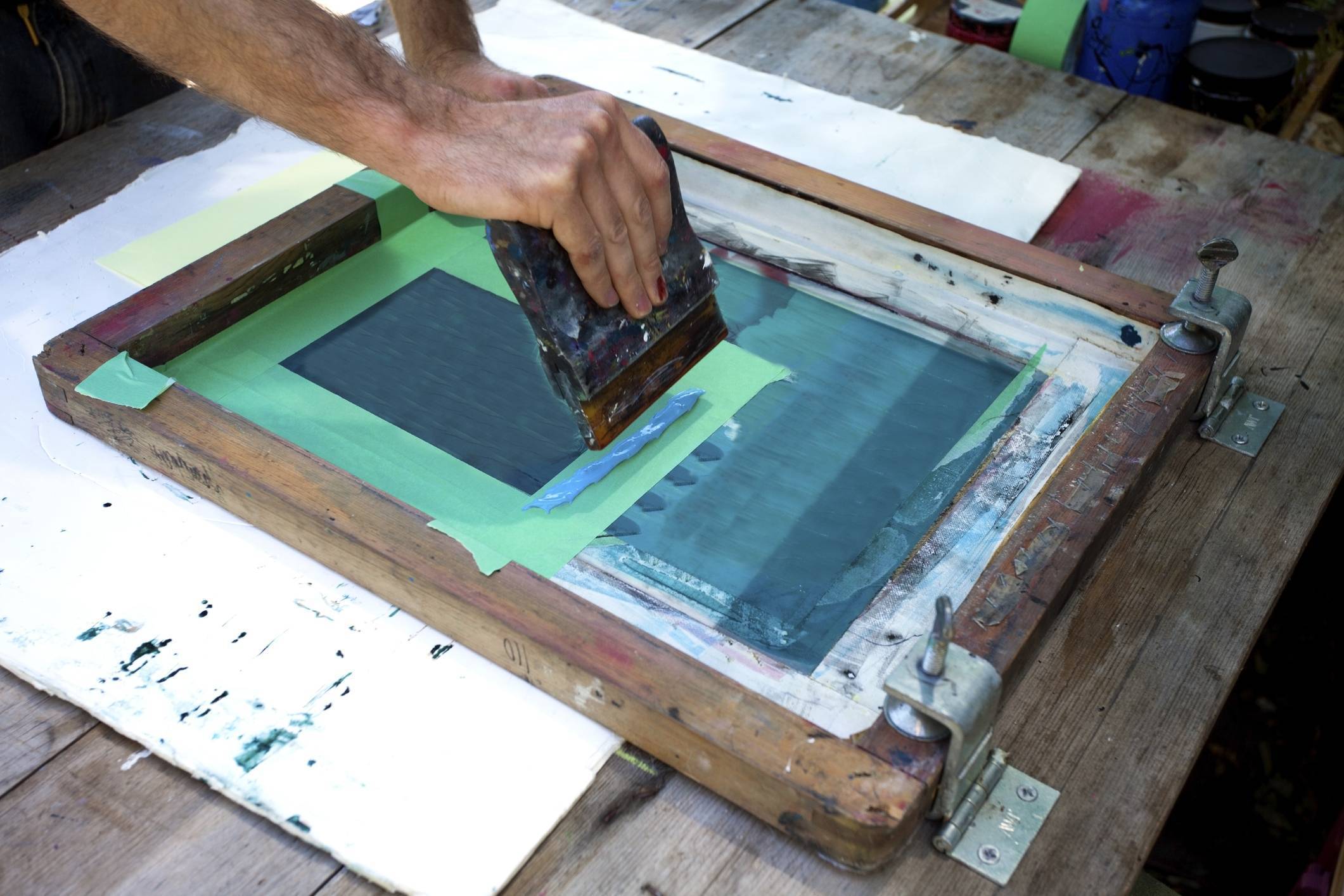ChatGPT said: Why 10:9 Design Screen Printing is perfect for event merchandise
Discover the Various Kinds of Screen Printing Techniques for Your Next Job
Screen printing uses a diverse variety of techniques that can enhance any type of innovative project. From typical approaches like serigraphy to modern-day advancements such as direct-to-garment printing, each technique has its distinct benefits. Specialty alternatives, consisting of metal and environmentally friendly inks, introduce a lot more opportunities. Comprehending these strategies can considerably impact the last result. Nonetheless, the difficulty hinges on selecting the most suitable method for specific requirements and wanted results. What factors should one think about?

The Basics of Screen Printing
Although screen printing might seem facility, it is fundamentally a simple procedure that involves transferring ink via a mesh screen onto various surface areas. The technique begins with the production of a stencil, which specifies the style to be published. This stencil is affixed to a mesh screen, typically made from polyester or nylon. Once the stencil is in area, ink is put on the screen and pressed through the mesh using a squeegee, leading to the preferred pattern being published on the underlying product.
Screen printing can be executed on a vast array of substrates, including paper, plastic, and fabric, making it a versatile selection for various projects. The process enables for elaborate designs and lively colors, making it prominent in markets such as advertising and marketing, art, and fashion. Recognizing these essentials furnishes people with the fundamental expertise called for to explore more advanced strategies in screen printing.
Typical Screen Printing Techniques
Traditional screen printing strategies have been utilized for centuries, preserving the craftsmanship and artistry of this technique. This method uses a mesh screen to transfer ink onto a substratum, such as textile or paper, permitting vivid and lasting styles. The procedure begins with creating a pattern, which blocks certain locations of the screen to regulate where the ink will certainly be used.
One prominent technique is serigraphy, frequently utilized for restricted versions and imaginative prints. Another is making use of water-based inks, which are environment-friendly and provide a soft feel on textiles - 10:9 Design Screen Printing. In addition, standard approaches can include hands-on printing, where craftsmens apply ink with a squeegee, making certain precision and focus to information
These strategies stay valued in the market for their responsive top quality and the distinct textures they create, interesting both developers and consumers that appreciate the heritage of screen printing.
Digital Screen Printing Innovations
As the demand for faster production and personalization in the printing market has surged, digital screen printing advancements have actually arised as a game-changer. This technology mixes traditional screen printing methods with electronic processes, enabling quick prototyping and detailed layouts that were previously challenging to attain. One considerable development is the introduction of direct-to-garment (DTG) printing, which facilitates high-quality, full-color prints on different fabrics without the need for screens. In addition, improvements in ink solutions have actually resulted in environment-friendly alternatives that keep vibrant colors while minimizing ecological effect. The usage of automated systems even more improves manufacturing, lowering labor costs and boosting precision. These developments not only satisfy little set orders and tailored designs yet likewise enable quicker turn-around times, making them ideal for services focused on meeting customer demands in a fast-paced market. Digital screen printing, subsequently, represents a necessary evolution in the domain of printing strategies.
Specialty Screen Printing Approaches
Discovering specialized screen printing approaches reveals a diverse variety of methods that push the limits of imagination and functionality in the printing market. Amongst these, glow-in-the-dark inks give an one-of-a-kind visual impact, making designs come active in low-light conditions. Metallic inks, understood for their sparkling coating, add a touch of high-end to published materials. Another ingenious approach is discharge printing, which removes dye from the fabric rather than adding ink, causing a soft, vintage feeling. High-density printing develops a raised appearance externally, improving responsive involvement. Furthermore, water-based inks are gaining appeal for their lively colors and decreased environmental effect. Each of these specialized techniques provides to certain layout requirements, enabling musicians and brands to produce standout items that resonate with their target markets. By leveraging these methods, services can boost their screen printing tasks to brand-new heights, guaranteeing remarkable impacts.
Eco-Friendly Screen Printing Options
Green screen printing choices are obtaining traction as the market shifts in the direction of sustainability. Lasting ink choices and making use of biodegradable materials are crucial elements in minimizing the environmental impact of the printing procedure. By adopting these practices, screen printers can add to an extra sustainable future while keeping high-grade results.
Sustainable Ink Options

Biodegradable Materials Usage
As the screen printing industry develops, the incorporation of naturally degradable materials is becoming increasingly important for ecologically aware techniques. Developers and suppliers are now checking out inks and substrates made from natural, renewable energies that decompose extra successfully than typical equivalents. These biodegradable choices minimize plastic waste and reduce ecological effect, straightening with the growing demand for lasting items.
Common examples include water-based inks and organic cotton materials, both of which minimize unsafe chemicals and promote eco-friendliness. Brands that adopt these products frequently improve their market allure, bring in consumers that focus on sustainability. As recognition of ecological issues remains to climb, the shift towards biodegradable materials in screen printing is likely to gain energy, cultivating a greener sector standard.
Picking the Right Technique for Your Project
Exactly how can one establish one of the most suitable screen printing technique for a specific project? The decision pivots on numerous factors, including the product to be get more info published on, the intricacy of the layout, and the preferred manufacturing quantity - 10:9 Design Embroidery. For circumstances, direct-to-garment printing is excellent for detailed styles with various shades, while traditional screen printing excels for larger runs of simpler graphics
In addition, factor to consider of the end-use of the printed item is essential. For outdoor applications, techniques that use toughness and weather resistance, such as plastisol ink, may be chosen. On the other hand, environmentally-conscious tasks might take advantage of biodegradable products or water-based inks.
Eventually, understanding the job's special requirements permits an enlightened choice, guaranteeing both aesthetic allure and functional long life. By evaluating style intricacy, material compatibility, and production range, one can properly select the most ideal screen printing technique to meet their task's goals.
Regularly Asked Concerns
What Is the History of Screen Printing?
Screen printing came from in ancient China around 1000 AD, advancing via Japan and Europe. By the 20th century, it came to be preferred in business art and fashion, reinventing exactly how designs were generated and distributed around the world.

How Do I Prepare Artwork for Screen Printing?
To prepare artwork for screen printing, one should assure high resolution, use an appropriate shade setting, produce separate layers for every shade, and convert message to outlines, ensuring compatibility with the printing procedure and wanted end result.
What Materials Are Ideal for Screen Printing?
The very best products for screen printing include high-quality inks, durable displays, and suitable substratums like cotton, polyester, or blends. Additionally, using suitable solution and squeegees can enhance the printing procedure and final results.
Can I Screen Publish at Home?
Yes, screen printing in your home is feasible. With the best materials, arrangement, and techniques, people can create high-quality prints. Nevertheless, careful factor to consider of office and tools is necessary for successful results.

What Prevail Errors in Screen Printing?
Common mistakes in screen printing consist of incorrect exposure times, poor ink uniformity, misalignment of displays, not enough cleaning of products, and disregarding to check prints. These mistakes can compromise the quality and precision of the end product.
Screen printing may seem facility, it is fundamentally a straightforward process that includes moving ink with a mesh screen onto various surfaces. As the demand for faster production and personalization in the printing industry has surged, electronic screen printing advancements have emerged as a game-changer. Discovering specialized screen printing methods reveals a diverse array of techniques that press the limits of imagination and performance in the printing sector. The ideal products for screen printing consist of top notch inks, durable screens, and appropriate substratums like cotton, polyester, or blends (10:9 Design Embroidery). Usual errors in screen printing include improper direct exposure times, insufficient ink uniformity, misalignment of displays, not enough cleansing of materials, and overlooking to check prints